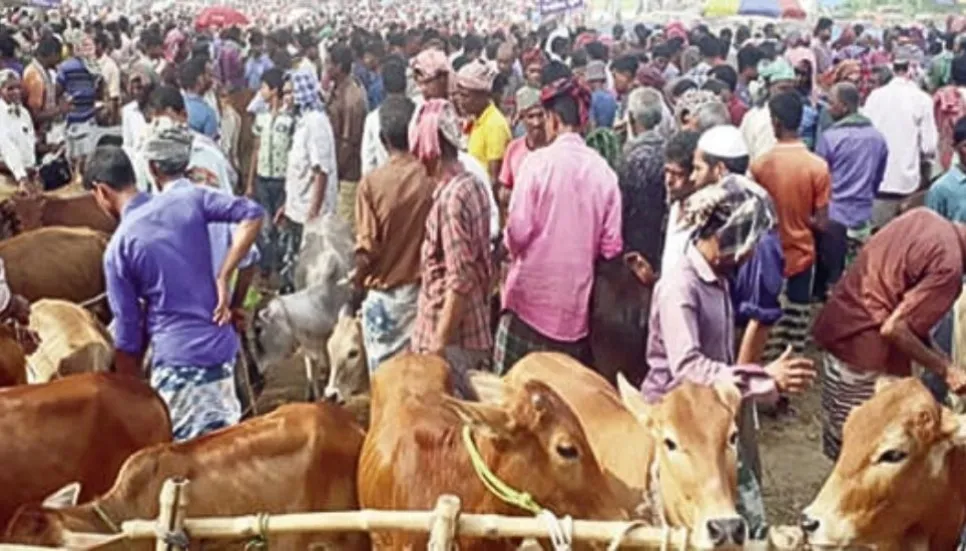
Cattle markets in Rajshahi have no scarcity of sacrificial animals with plenty of local animals as only two days have left for Eid-ul-Azha, one of the largest religious festivals of the Muslims.
Abdur Rashid, 48, a farmer of Itaghati village under Paba Upazila, said he sold a bull at City haat yesterday at Tk 1,60,000. He also has four more bulls for sale before Eid, reports BSS.
Atiqur Rahman Kalu, lease holder of City haat, said the cattle markets here are witnessing a record supply of sacrificial animals as farmers boosted local animal production to meet its growing demand during the Eid season.
He mentioned that both in rural and urban areas, the poor and marginalised people including women have achieved tremendous success in animal production getting assistance from the government and development partners.
The price of an ideal-sized cow or buffalo starts from Tk 60,000 to 1,80,000 and a sheep or goat can be purchased from Tk 8,000 to 35,000 as per its size, they said.
In most of the cattle markets, the buyers were seen opting to purchase native animals.
Rahman said the cattle traders at the haat were charging a middle-sized bull at Tk 65,000-1,75,000 weighing about three to four maunds at present.
He said a small bull was available at Tk 60,000-1,20,000 while a medium-sized one is available at Tk 90,000-1,95,000 while a large bull is being sold at Tk 1,25,000-2,50,00.
While visiting different cattle markets, this correspondent saw buyers’ utmost interest in purchasing local animals instead of artificially fattened ones for health concerns.
Native animals were seen dominating the cattle markets as a large number of animals including buffalo, bull, oxen, goats and sheep were brought for selling in different markets.
House-to-house cattle rearing has been contributing a lot towards improving the living and livelihood conditions of the grassroots population through enriching animal resources.
Locally cattle rearing is meeting the existing demands of meeting within the country. Moreover, largely native cattle production has been lessening the dependence on animal imports from the neighbouring country. In most of the cattle markets, the buyers were seen purchasing native animals.
District Livestock Officer Dr Zulfikar Akhter Hossain said the local animal husbandry sector has marked a revolutionary boost in recent years bringing fortune to hundreds of people in the region.
He said many of the rural families have been rearing and fattening bulls commercially and earning huge profits every year.
Rajshahi City Corporation allowed the installation of eight makeshift cattle markets in its area of jurisdiction which has already begun to draw huge cattle.
Traders said there were plenty of cattle in the markets and the prices were similar to the previous Eid-ul-Azha.
In addition to the city’s biggest cattle market haat, some temporary markets have been set up at Court Bazaar, Shaheb Bazar Zero point, Railway Station, Court Station, Naodapara Aam Chattar and Kazla.
Meanwhile, currency-screening machines were installed in cattle markets in the city and nine upazilas of the district for resisting the use of fake notes on the occasion of holy Eid.
Biplob Bijoy Talukder, commissioner of Rajshahi Metropolitan Police, told journalists that all-out security measures were taken to ensure law and order in and around the cattle markets.
“Besides, we have introduced a special traffic management system to ease traffic congestion around cattle markets in the city,” he added.